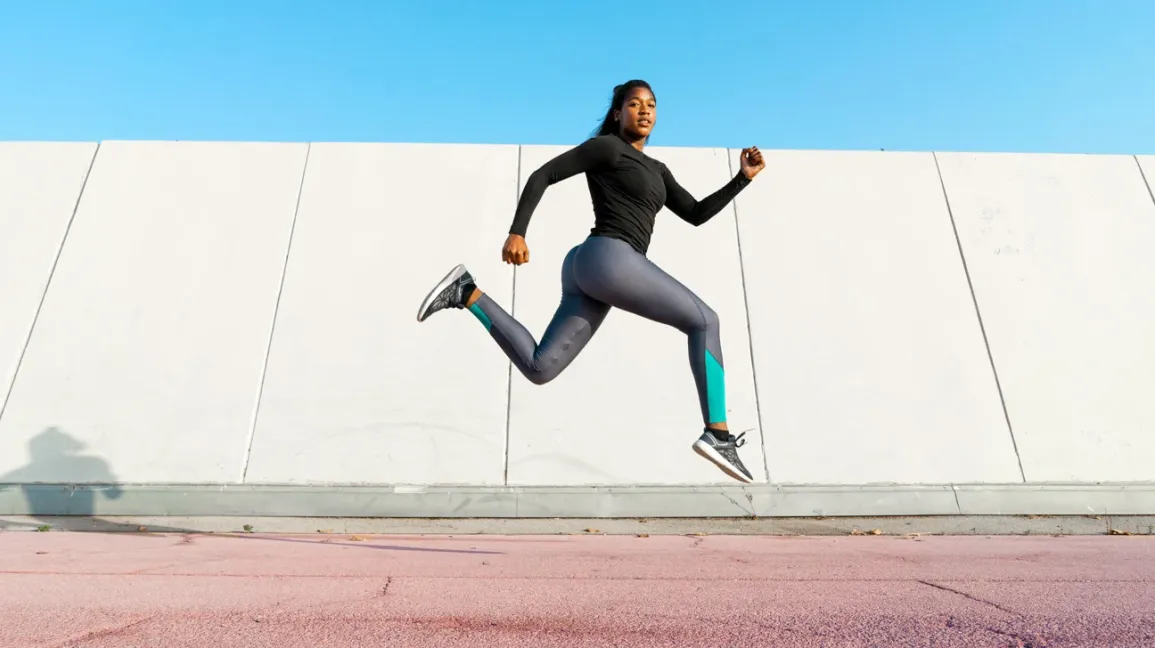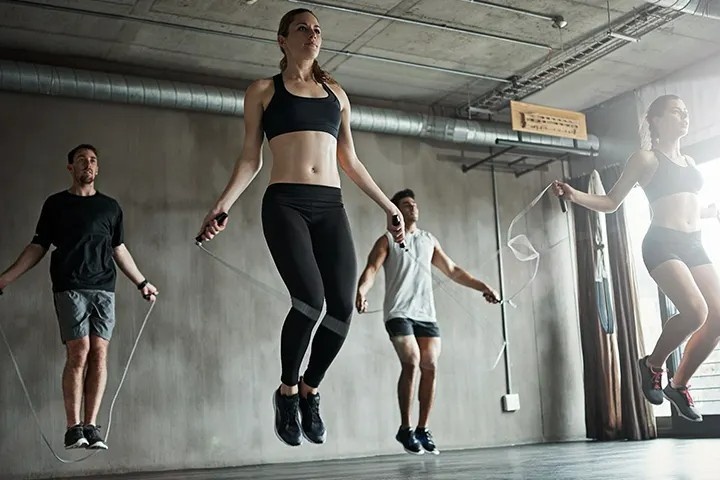Ever wondered if jumping could be your secret weapon to gain those extra inches? It’s a sport that’s easy to love, given its convenience and efficiency. But does it really have the power to make you taller?
To answer that, we first need to know what determines height. Genetics play a huge role, with over 700 identified genes each contributing to your growth potential. The DNA you inherit from your parents is 80% responsible for your adult height. But what about the other 20%? Could jumping help fill the gap? Let’s jump in and find out.

Contents
Does Jumping Make You Taller?
No, jumping itself won’t directly make you taller after you reach skeletal maturity (around your late teens or early twenties). This is because the long bones in your legs, where most of your height growth comes from, have stopped growing by that point.
However, jumping can be beneficial for growing children during puberty:
- Stimulates Bone Growth: Jumping puts stress on the bones, which can signal the body to produce more bone cells and strengthen existing ones. This can contribute to maximizing your natural height potential during puberty.
- Improves Cartilage Health: Cartilage growth plates located near the ends of long bones play a crucial role in height gain during childhood. Jumping can help keep these cartilage tissues healthy.
- Maintains Good Posture: Jumping exercises can strengthen core muscles that support proper posture. Good posture can create the illusion of being taller.
Jumping is a great exercise to include in a healthy lifestyle, but it won’t magically increase your height after your growth plates have fused.
What Body Parts Are Affected By Jumping Exercises?
Jumping exercises, such as skipping and vertical jumps, positively impact various parts of your body. These exercises are great not just for boosting heart health but also improving athleticism, cardio stamina, and mobility.
Leg Muscles: They bear the brunt of the impact during a jump. Your quadriceps, hamstrings, calves, and shins work in unison for a successful leap. Over time, these muscles strengthen, enhancing your power and agility.
Core Muscles: The act of jumping isn’t just a lower body affair. Your core muscles – including your abs, obliques, and lower back – play a vital role in maintaining balance. Stabilizing your body during a leap or landing puts these powerhouse muscles to work.
Spine: Jumping can effectively reduce axial pressure against the spine, closely resembling the impact of low-gravity environments. For instance, when astronauts venture into space, they can appear up to 2 inches taller due to reduced spine compression. The fluid pressure in their spinal sacs exceeds any forces pressing against them, enabling expansion beyond the usual vertical limit.
How To Jump To Increase Height?
While jumping exercises won’t directly lead to increased height after growth plates have fused, they can be beneficial for maximizing your natural height potential during puberty and improving posture, which can make you appear taller. Here are some things to consider:

Maximizing Height Potential During Puberty:
-
Focus on exercises that target multiple muscle groups and involve jumping: Exercises like jump squats, vertical jumps, and box jumps can put some stress on the long bones and cartilage in your legs, which can aid growth during puberty.
-
Maintain a balanced diet: A diet rich in calcium, vitamin D, and protein is essential for bone health and development during growth spurts.
-
Get enough sleep: During sleep, your body releases growth hormone, which plays a crucial role in bone growth and development. Aim for 8-10 hours of sleep each night.
Exercises for Jumping and Posture:
-
Jump Squats: Stand with your feet shoulder-width apart, then lower yourself into a squat position. Jump explosively upwards, extending your arms overhead. Land softly and repeat.
-
Vertical Jumps: Stand with your feet hip-width apart and swing your arms back as you lower yourself slightly. Then, jump straight up as high as you can, swinging your arms up for momentum. Land softly and repeat.
-
Box Jumps: Find a stable box that’s challenging but achievable for you to jump onto. Squat down slightly and then jump explosively to land on top of the box. Step down carefully and repeat.
How Often Should You Jump?
The ideal jumping frequency depends on your goals and fitness level:

Maximizing Height Potential (Puberty):
- Frequency: Aim for 2-3 jumping sessions per week.
- Intensity: Focus on moderate-intensity exercises with proper form and controlled landings.
- Recovery: Allow rest days for your muscles and bones to recover and rebuild.
Improving Jumping Ability (General Fitness):
- Frequency: You can jump more often, 3-5 times a week, depending on the intensity and your recovery capacity.
- Intensity: Gradually increase the intensity of your workouts as you get stronger. This could involve higher jumps, more repetitions, or incorporating plyometric exercises.
- Recovery: Rest days are still crucial. Consider incorporating active recovery activities like swimming or yoga on rest days.
Here’s a breakdown of different goals:
- 2-3 times per week: For maximizing height potential during puberty or low-impact jumping for general fitness.
- 3-5 times per week: For improving overall jumping ability and incorporating plyometric exercises.
Frequently Asked Questions
Can I increase my height after 18 years?
Once your growth plates have closed, typically around 18 years of age, it’s unlikely you’ll grow taller. Females generally reach full height between 14 and 16 years, while males tend to do so between 16 and 18. Growing after this age is quite uncommon.
Can jumping exercises make me taller?
Although jumping exercises provide numerous health benefits, they won’t directly contribute to height increase. Your height is largely determined by genetics, and physical activities don’t significantly impact it. Nonetheless, jumping exercises promote overall fitness and well-being.
Is performing 1000 skips a day beneficial?
Yes, doing 1000 skips daily can enhance your cardiovascular fitness and burn calories. However, the exact amount of calories burned depends on several factors, such as your weight, age, and exercise intensity.
How can I increase my height in 15 days?
Height cannot be significantly increased in a short 15-day period. However, certain exercises might help, such as forward spine stretches, pelvic shifts, hanging exercises, swimming, cycling, the cobra yoga pose, single-leg hopping, and forward bending.
How many jump ropes a day can help increase my height?
While jump ropes won’t directly increase your height, consistency in skipping rope can improve your fitness levels. Start with 50 skips and progressively increase to 75, 100, and eventually, a minimum of 300 skips daily. Regular skipping for 3 to 6 months can lead to noticeable fitness improvements.

Hello, I’m Ravindra. Over the years, I’ve immersed myself deeply into the world of fitness and health, transforming both my body and mind. Writing has allowed me to share my journey, insights, and expertise with those just starting out and seasoned fitness enthusiasts alike. Beyond just routines and diets, I believe in inspiring others to adopt a holistic approach to well-being.
